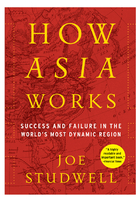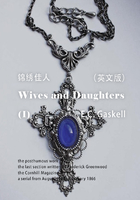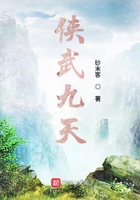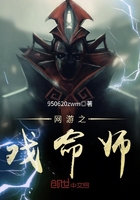The Chronicles of the Birth of Peru
The historian who mastered the subject of the discovery and conquest of Peru by the Spaniards better than anyone else had a tragic story. He died without having written the book for which he had prepared himself his whole life and whose theme he knew so well that he almost gave the impression of being omniscient. His name was Raúl Porras Barrenechea. He was a small, pot-bellied man with a large forehead and a pair of blue eyes that became impregnated with malice everytime he mocked someone. He was the most brilliant teacher I have ever had. Marcel Bataillon, another historian whom I had a chance to listen to at the Collège de France in a course he gave on a Peruvian chronicle, seemed to be able to match Porras Barrenechea's eloquence and evocative power as well as his academic integrity. But not even the learned and elegant Bataillon could captivate an audience with the enchantment of Porras Barrenechea. In the big old house of San Marcos, the first university founded by the Spaniards in the New World, a place which had already begun to fall into an irreparable process of decay when I passed through it in the 1950s, the lectures on historical sources attracted such a vast number of listeners that it was necessary to arrive well in advance so as not to be left outside the classroom listening together with dozens of students literally hanging from the doors and windows.
Whenever Porras Barrenechea spoke, history became anecdote, gesture, adventure, color, psychology. He depicted history as a series of mirrors which had the magnificence of a Renaissance painting and in which the determining factor of events was never the impersonal forces, the geographical imperative, the economic relations of divine providence, but a cast of certain outstanding individuals whose audacity, genius, charisma, or contagious insanity had imposed on each era and society a certain orientation and shape. As well as this concept of history, which the scientific historians had already named as romantic in an effort to discredit it, Porras Barrenechea demanded knowledge and documentary precision, which none of his colleagues and critics at San Marcos had at that time been able to equal. Those historians who dismissed Porras Barrenechea because he was interested in simple, narrated history instead of a social or economic interpretation had been less effective than he was in explaining to us that crucial event in the destiny of Europe and America — the destruction of the Inca Empire and the linking of its vast territories and peoples to the Western world. This was because for Porras Barrenechea, although history had to have a dramatic quality, architectonic beauty, suspense, richness, and a wide range of human types and excellence in the style of a great fiction, everything in it also had to be scrupulously true, proven time after time.
In order to be able to narrate the discovery and conquest of Peru in this way, Porras Barrenechea first had to evaluate very carefully all the witnesses and documents so as to establish the degree of credibility of each one of them. And in the numerous cases of deceitful testimonies, Porras Barrenechea had to find out the reasons that led the authors to conceal, misrepresent, or overclaim the facts, so that knowing the peculiar limitations, those sources had a double meaning — what they revealed and what they distorted. For forty years Porras Barrenechea dedicated all his powerful intellectual energy to this heroic hermeneutic. All the works he published while he was alive constitute the preliminary work for what should have been his magnum opus. When he was perfectly ready to embark upon it, pressing on with assurance through the labyrinthine jungle of chronicles, letters, testaments, rhymes, and ballads of the discovery and conquest that he had read, cleansed, confronted, and almost memorized, sudden death put an end to his encyclopedic information. As a result, all I those interested in that era and in the men who lived in it have had to keep on reading the old but so far unsurpassed history of the conquest written by an American who never set foot in the country but who sketched it with extraordinary skill — William Prescott.
Dazzled by Porras Barrenechea's lectures, at one time I seriously considered the possibility of putting literature aside so as to dedicate myself to history. Porras Barrenechea had asked me to work with him as an assistant in an ambitious project on the general history of Peru under the auspices of the bookseller and publisher Juan Mejía Baca. It was Porras Barrenechea's task to write the volumes devoted to the conquest and emancipation. For four years I spent three hours a day, five days a week, in that dusty house on Colina Street where the books, the card indexes, and the notebooks had slowly invaded and devoured everything except Porras Barrenechea's bed and the dining table. My job was to read and take notes on the chronicles' various themes, but principally the myths and legends that preceded and followed the discovery and conquest of Peru. That experience has become an unforgettable memory for me. Whoever is familiar with the chronicles of the conquest and discovery of America will understand why. They represent for us Latin Americans what the novels of chivalry represent for Europe, the beginning of literary fiction as we understand it today.
Permit me here a long parenthesis. As you probably know, the novel was forbidden in the Spanish colonies by the Inquisition. The Inquisitors considered this literary genre, the novel, to be as dangerous for the spiritual faith of the Indians as for the moral and political behavior of society, and, of course, they were absolutely right. We novelists must be grateful to the Spanish Inquisition for having discovered before any critic did the inevitable subversive nature of fiction. The prohibition included reading and publishing novels in the colonies. There was no way naturally to avoid a great number of novels being smuggled into our countries; and we know, for example, that the first copies of Don Quixote entered America hidden in barrels of wine. We can only dream with envy about what kind of experience it was in those times in Spanish America to read a novel — a sinful adventure in which in order to abandon yourself to an imaginary world you had to be prepared to face prison and humiliation.
Novels were not published in Spanish America until after the wars of independence. The first, El Periquillo Sarniento (The Itching Parrot), appeared in Mexico in 1816. Although for three centuries novels were abolished, the goal of the Inquisitors — a society free from the influence of fiction — was not achieved. They did not realize that the realm of fiction was larger and deeper than that of the novel. Nor could they imagine that the appetite for lies, that is, for escaping objective reality through illusions, was so powerful and so deeply rooted in the human spirit that, once the novel could not be used to satisfy it, all other disciplines and genres in which ideas could freely flow would be used as a substitute — history, religion, poetry, science, art, speeches, journalism, and the daily habits of the people. Thus by repressing and censuring the literary genre specifically invented to give the necessity of lying a place in the city, the Inquisitors achieved the exact opposite of their intentions.
We are still victims in Latin America of what we could call the revenge of the novel. We still have great difficulty in our countries in differentiating between fiction and reality. We are traditionally accustomed to mixing them in such a way that this is probably one of the reasons why we are so impractical and inept in political matters, for instance. But some good also came from this novelization of our whole life. Books like One Hundred Years of Solitude, Cortázar's short stories, and Roa Bastos's[1] novels would not have been possible otherwise. The tradition from which this kind of literature sprang, in which we are exposed to a world totally reconstructed and subverted by fantasy, started without doubt in those chronicles of the conquest and discovery that I read and annotated under the guidance of Porras Barrenechea. I now close the parenthesis and return to my subject.
History and literature, truth and falsehood, reality and fiction mingle in these texts in a way that is often inextricable. The thin demarcation line that separates one from the other frequently fades away so that both worlds are entwined in a completeness which the more ambiguous it is the more seductive it becomes because the likely and the unlikely in it seem to be part of the same substance. Right in the middle of the most cruel battle, the Virgin appears, who, taking the believer's side, charges against the unlucky pagans. The shipwrecked conquistador, Pedro Serrano, on a tiny island in the Caribbean, actually lives out the story of Robinson Crusoe that a novelist invented centuries later. The Amazons of Greek mythology became materialized by the banks of the river baptized with their name as they wounded Francisco de Orellana's[2] followers with their arrows, one arrow landing in Fray Gaspar de Carvajal's[3] buttocks, the man who meticulously narrated this event. Is that episode more fabulous than another, probably historically correct, in which the poor soldier, Manso de Leguízamo, loses in one night of dice playing the solid-gold wall of the Temple of the Sun in Cuzco that was given to him in the spoils of war? Or more fabulous perhaps than the unutterable outrages always committed with a smile by the rebel Francisco de Carvajal,[4] that octogenarian devil of the Andes who merrily began to sing "Oh mother, my poor little curly hairs the wind is taking them away one by one, one by one," as he was being taken to the gallows, where he was to be quartered, beheaded, and burned?
The chronicle, a hermaphrodite genre, is distilling fiction into life all the time as in Borges's tale "Tlon, Uqbar, Orbis Tertius." Does this mean that its testimony must be challenged from a historical point of view and accepted only as literature? Not at all. Its exaggerations and fantasies often reveal more about the reality of the era than its truths. Astonishing miracles from time to time enliven the tedious pages of the Crónica moralizada, the exemplary chronicle of Father Calancha,[5] sulphurous outrages come from the male and female demons, fastidiously catechized in the Indian villages by the extirpators of idolaters like Father Arriaga,[6] to justify the devastations of idols, amulets, ornaments, handicrafts, and tombs. This teaches more about the innocence, fanaticism, and stupidity of the time than the wisest of treatises.
As long as one knows how to read them, everything is contained in these pages written sometimes by men who hardly knew how to write and who were impelled by the unusual nature of contemporary events to try to communicate and register them for posterity, thanks to an intuition of the privilege they enjoyed, that of being the witnesses and actors of events that were changing the history of the world. Because they narrated these events under the passion of recently lived experience, they often related things that to us seem like na?ve or cynical fantasies. For the people of the time, this was not so; they were phantoms that credulity, surprise, fear, and hatred had endowed with a solidity and vitality often more powerful than beings made of flesh and blood.
The conquest of the Tahuantinsuyo,[7] by a handful of Spaniards, is a fact of history that even now, after having digested and ruminated over all the explanations, we find hard to unravel. The first wave of conquistadores, Pizarro[8] and his companions, were fewer than two hundred, not counting the black slaves and the collaborating Indians. When the reinforcements started to arrive, this first wave had already dealt a mortal blow and taken over an empire that had ruled over at least twenty million people. This was not a primitive society made up of barbaric tribes like the ones the Spaniards had found in the Caribbean or in Darién, but a civilization that had reached a high level of social, military, agricultural, and handicraft development which in many ways Spain itself had not reached.
The most remarkable aspects of this civilization, however, were not the paths that crossed the four suyos, or regions, of the vast territory, the temples and fortresses, the irrigation systems, or the complex administrative organization, but something in which all the testimonies of these chronicles coincide. This civilization managed to eradicate hunger in that immense region. It was able to distribute all that was produced in such a way that all its subjects had enough to eat. Only a very small number of empires throughout the whole world have succeeded in achieving this feat. Are the conquistadores' firearms, horses, and armor enough to explain the immediate collapse of this Inca civilization at the first clash with the Spaniards? It is true the gun powder, bullets, and the charging of beasts that were unknown to them paralyzed the Indians with a religious terror and provoked in them the feeling that they were fighting, not against men, but against gods who were invulnerable to the arrows and slings with which they fought. Even so, the numerical difference was such that the Quechua ocean would have had to shake in order to drown the invader.
What prevented this from happening? What is the profound explanation for that defeat from which the Inca population never recovered? The answer may perhaps lie hidden in the moving account that appears in the chronicles of what happened in the Cajamarca Square the day Pizarro captured the Inca Atahualpa.[9] We must above all read the accounts of those who were there, those who lived through the event or had direct testimony of it like Pedro Pizarro. At the precise moment the emperor is captured, before the battle begins, his armies give up the fight as if manacled by a magic force. The slaughter is indescribable, but only from one of the two sides. The Spaniards discharged their harquebuses, thrusted their pikes and swords, and charged their horses against a bewildered mass, which, having witnessed the capture of their god and master, seemed unable to defend itself or even to run away. In the space of a few minutes, the army, which had defeated Prince Huáscar[10] and which dominated all the northern provinces of the empire, disintegrated like ice in warm water.
The vertical and totalitarian structure of the Tahuantinsuyo was without doubt more harmful to its survival than all the conquistadores' firearms and iron weapons. As soon as the Inca, that figure who was the vortex toward which all the wills converged searching for inspiration and vitality, the axis around which the entire society was organized and upon which depended the life and death of every person, from the richest to the poorest, was captured, no one knew how to act. And so they did the only thing they could do with heroism, we must admit, but without breaking the thousand and one taboos and precepts that regulated their existence. They let themselves get killed. And that was the fate of dozens and perhaps hundreds of Indians stultified by the confusion and the loss of leadership they suffered when the Inca emperor, the life force of their universe, was captured right before their eyes. Those Indians who let themselves be knifed or blown up into pieces that somber afternoon in Cajamarca Square lacked the ability to make their own decisions either with the sanction of authority or indeed against it and were incapable of taking individual initiative, of acting with a certain degree of independence according to the changing circumstances.
Those one hundred and eighty Spaniards who had placed the Indians in ambush and were now slaughtering them did possess this ability. It was this difference, more than the numerical one or the weapons, that created an immense inequality between those civilizations. The individual had no importance and virtually no existence in that pyramidal and theocratic society whose achievements had always been collective and anonymous — carrying the gigantic stones of the Macchu Picchu citadel or of the Ollantay fortress up the steepest of peaks, directing water to all the slopes of the cordillera hills by building terraces that even today enable irrigation to take place in the most desolate places, and making paths to unite regions separated by infernal geographies.
A state religion that took away the individual's free will and crowned the authority's decision with the aura of a divine mandate turned the Tahuantinsuyo into a beehive — laborious, efficient, stoic. But its immense power was in fact very fragile. It rested completely on the sovereign god's shoulders, the man whom the Indian had to serve and to whom he owed a total and selfless obedience. It was religion rather than force that preserved the people's metaphysical docility toward the Inca. The social and political function of his religion is an aspect of the Tahuantinsuyo that has not been studied enough. The creed and the rite as well as the prohibitions and the feasts, the values, and devices all served to strengthen carefully the emperor's absolute power and to propitiate the expansionist and colonizing designs of the Cuzco[11] sovereigns. It was an essentially political religion, which on the one hand turned the Indians into diligent servants and on the other was capable of receiving into its bosom as minor gods all the deities of the peoples that had been conquered, whose idols were moved to Cuzco and enthroned by the Inca himself. The Inca religion was less cruel than the Aztec one, for it performed human sacrifices with a certain degree of moderation, if this can be said, making use only of the necessary cruelty to ensure hypnosis and fear of the subjects toward the divine power incarnated in the temporary power of the Inca.
We cannot call into question the organizing genius of the Inca. The speed with which the empire in the short period of a century grew from its nucleus in Cuzco to become a civilization that embraced three quarters of South America is incredible. And this was the result not only of the Quechua's military efficiency but also of the Inca's ability to persuade the neighboring peoples and cultures to join the Tahuantinsuyo. Once this became part of the empire, the bureaucratic mechanism was immediately set in motion enrolling the new servants in that system that dissolves individual life into a series of tasks and gregarious duties carefully programmed and supervised by the gigantic network of administrators whom the Inca sent to the furthest borders. Either to prevent or to extinguish rebelliousness, there was a system called mitimaes, by which villages and people were removed en masse to faraway places where, feeling misplaced and lost, these exiles naturally assumed an attitude of passivity and absolute respect, which of course represented the Inca system's ideal citizen.
Such a civilization was capable of fighting against the natural elements and defeating them. It was capable of consuming rationally what it produced, heaping together reserves for future times of poverty or disaster. And it was also able to evolve slowly and with care in the field of knowledge, inventing only that which could support it and deterring all that which in some way or another could undermine its foundation — as, for example, writing, or any other form of expression likely to develop individual pride or a rebellious imagination.
It was not capable, however, of facing the unexpected, that absolute novelty presented by the balance of armored men on horseback who assaulted the Incas with weapons transgressing all the war-and-peace patterns known to them. When, after the initial confusion, attempts to resist started breaking out here and there, it was too late. The complicated machinery regulating the empire had entered a process of decomposition. Leaderless with the murder of Inca Huayna Capac's two sons, Huáscar and Atahualpa, the Inca system seems to fall into a monumental state of confusion and cosmic deviation, similar to the chaos that, according to the Cuzcan sages, the Amautas, had prevailed in the world before the Tahuantinsuyo was founded by the mythical Manco Capac and Mama Ocllo.
While on the one hand caravans of Indians loaded with gold and silver continued to offer treasures to the conquistadores to pay for the Inca's rescue, on the other hand a group of Quechua generals, attempting to organize the resistance, fired at the wrong target, for they were venting their fury on the Indian cultures that had begun to collaborate with the Spaniards because of all their grudges against their ancient masters.
Spain had already won the game, although the rebellious outbreaks, which were always localized and counterchecked by the servile obedience that great sectors of the Inca system transferred automatically from the Incas to the new masters, had multiplied in the following years up to Manco Inca's[12] insurrection. But not even this uprising, notwithstanding its importance, represented a real danger to the Spanish rule. Those who destroyed the Inca Empire and created that country which is called Peru, a country that four and a half centuries later has not yet managed to heal the bleeding wounds of its birth, were men whom we can hardly admire. They were, it is true, uncommonly courageous, but contrary to what the edifying stories teach us, most of them lacked any idealism or higher purpose. They possessed only greed, hunger, and in the best of cases a certain vocation for adventure. The cruelty in which the Spaniards took pride and which the chronicles depict to the point of making us shiver was inscribed in the ferocious customs of the times and was without doubt equivalent to that of the people they subdued and almost extinguished.
Three centuries later, the Inca population had been reduced from twenty million to only six. But these semiliterate, implacable, and greedy swordsmen who even before having completely conquered the Inca Empire were already savagely fighting among themselves or fighting the pacifiers sent against them by the faraway monarch to whom they had given a continent, represented a culture in which, we will never know if for the benefit or disgrace of mankind, something new and exotic had germinated in the history of man. In this culture, although injustice and abuse often favored by religion had proliferated, by the alliance of multiple factors — among them chance — a social space of human activities had evolved that was neither legislated nor controlled by those in power. On the one hand this evolution would produce the most extraordinary economic, scientific, and technical development human civilization has ever known since the times of the cavemen with their clubs. On the other this new society would give way to the creation of the individual as the sovereign source of values by which society would be judged.
Those who, rightly so, are shocked by the abuses and crimes of the conquest, must bear in mind that the first men to condemn them and ask that they be brought to an end, were men, like Father Bartolomé de Las Casas, who came to America with the conquistadores and abandoned the ranks in order to collaborate with the vanquished, whose suffering they divulged with an indignation and virulence that still move us today.
Father Las Casas was the most active, although not the only one of those nonconformists who rebelled against the abuses inflicted upon the Indians. They fought against their fellow men and against the policies of their own country in the name of a moral principle that to them was higher than any principle of nation or state. This self-determination could not have been possible among the Inca or any of the other pre-Hispanic cultures. In these cultures, as in the other great civilizations of history foreign to the West, the individual could not morally question the social organism of which he was a part because he only existed as an integral atom of that organism and because for him the dictates of the state could not be separated from morality. The first culture to interrogate and question itself, the first to break up the masses into individual beings who with time gradually gained the right to think and act for themselves, was to become, thanks to that unknown exercise, freedom, the most powerful civilization in our world.
It is useless to ask oneself whether it was good that it happened in this manner, or whether it would have been better for humanity if the individual had never been born and the tradition of the antlike societies had continued forever. The pages of the chronicles of the conquest and discovery depict that crucial, bloody moment, full of phantasmagoria, when, disguised as a handful of invading treasure hunters, killing and destroying, the Judeo-Christian tradition, the Spanish language, Greece, Rome, and the Renaissance, the notion of individual sovereignty, and the chance of living in freedom all reached the shores of the Empire of the Sun. So it was that we as Peruvians were born. And of course the Bolivians, Chileans, Ecuadoreans, Colombians, and others.
Almost five centuries later, this notion of individual sovereignty is still an unfinished business. We have not yet, properly speaking, seen the light. We do not yet constitute real nations. Our contemporary reality is still impregnated with the violence and marvels that those first texts of our literature, those novels disguised as history or historical books corrupted by fiction, told us about.
At least one basic problem is the same. Two cultures, one Western and modern, the other aboriginal and archaic, hardly coexist, separated from one another because of the exploitation and discrimination that the former exercises over the latter. Our country, our countries, are in a deep sense more a fiction than a reality. In the eighteenth century, in France, the name of Peru rang with a golden echo. And an expression was then born: Ce n'est pas le Pérou, which is used when something is not as rich and extraordinary as its legendary name suggests. Well, Le Pérou ce n'est pas le Pérou. It never was, at least for the majority of its inhabitants, that fabulous country of legends and fictions, but rather an artificial gathering of men from different languages, customs, and traditions whose only common denominator was having been condemned by history to live together without knowing or loving each other.
Immense opportunities brought by the civilization that discovered and conquered America have been beneficial only to a minority, sometimes a very small one; whereas the great majority managed to have only the negative share of the conquest, that is contributing to their serfdom and sacrifice, to their misery and neglect, and to the prosperity and refinement of the westernized elites. One of our worst defects, our best fictions, is to believe that our miseries have been imposed on us from abroad, that others, for example, the conquistadores, have always been responsible for our problems. There are countries in Latin America, Mexico is the best example, in which the Spaniards are even now severely indicted for what they did to the Indians. Did they really do it? We did it; we are the conquistadores.
They were our parents and grandparents who came to our shores and gave us the names we have and the language we speak. They also gave us the habit of passing to the devil the responsibility for any evil we do. Instead of making amends for what they did, by improving and correcting our relations with our indigenous compatriots, mixing with them and amalgamating ourselves to form a new culture that would have been a kind of synthesis of the best of both, we, the westernized Latin Americans, have persevered in the worst habits of our forebears, behaving toward the Indians during the nineteenth and twentieth centuries as the Spaniards behaved toward the Aztecs and the Incas, and sometimes even worse. We must remember that in countries like Chile and Argentina, it was during the Republic (in the nineteenth century), not during the colony, that the native cultures were systematically exterminated.
It is a fact that in many of our countries, as in Peru, we share, in spite of the pious and hypocritical indigenous rhetoric of our men of letters and politicians, the mentality of the conquistadores. Only in countries where the native population was small or nonexistent, or where the aboriginals were practically liquidated, can we talk of integrated societies. In the others, discrete, sometimes unconscious, but very effective apartheid prevails. Important as integration is, the problem to achieving it lies in the huge economic gap between the two communities. Indian peasants live in such a primitive way that communication is practically impossible. It is only when they move to the cities that they have the opportunity to mingle with the other Peru. The price they must pay for integration is high — renunciation of their culture, their language, their beliefs, their traditions and customs, and the adoption of the culture of their ancient masters. After one generation they become mestizos. They are no longer Indians.
Perhaps there is no realistic way to integrate our societies other than by asking the Indians to pay that price. Perhaps the ideal, that is, the preservation of the primitive cultures of America, is a utopia incompatible with this other and more urgent goal — the establishment of societies in which social and economic inequalities among citizens be reduced to human, reasonable limits and where everybody can enjoy at least a decent and free life. In any case, we have been unable to reach any of those ideals and are still, as when we had just entered Western history, trying to find out what we are and what our future will be.
If forced to choose between the preservation of Indian cultures and their complete assimilation, with great sadness I would choose modernization of the Indian population because there are priorities; and the first priority is, of course, to fight hunger and misery. My novel El hablador is about a very small tribe in the Amazon called the Machiguengas. Their culture is alive in spite of the fact that it has been repressed and persecuted since Inca times. It should be respected. The Machiguengas are still resisting change; but their world is now so fragile that they cannot resist much longer. They have been reduced to practically nothing. It is tragic to destroy what is still living, still a driving cultural possibility, even if it is archaic; but I am afraid we shall have to make a choice. For I know of no case in which it has been possible to have both things at the same time, except in those countries in which two different cultures have evolved more or less simultaneously. But where there is such an economic and social gap, modernization is possible only with the sacrifice of the Indian cultures.
One of the saddest aspects of the Latin American culture is that, in countries like Argentina, there were men of great intelligence, real idealists, who gave the moral and philosophical reasons to continue the destruction of Indian cultures that began with the conquistadores. The case of Domingo F. Sarmiento is particularly sad to me, for I admire him very much. He was a great writer and also a great idealist. He was totally convinced that the only way in which Argentina could become modern was through westernization; that is, through the elimination of everything that was non-Western. He considered the Indian tradition, which was still present in the countryside of Argentina, a major obstacle for the progress and modernization of the country. He gave the moral and intellectual arguments in favor of what proved to be the decimation of the native population. That tragic mistake still looms in the Argentine psyche. In Argentine literature there is an emptiness that Argentine writers have been trying to fill by importing everything. The Argentines are the most curious and cosmopolitan people in Latin America, but they are still trying to fill the void caused by the destruction of their past.
This is why it is useful for us Latin Americans to review the literature that gives testimony to the discovery and the conquest. In the chronicles we not only dream about the time in which our fantasy and our realities seem to be incestuously confused. In them there is an extraordinary mixture of reality and fantasy, of reality and fiction in a united work. It is a literature that is totalizing, in the sense that it is a literature that embraces not only objective reality but also subjective reality in a new synthesis. The difference, of course, is that the chronicles accomplished that synthesis out of ignorance and na?veté and that modern writers have accomplished it through sophistication. But a link can be established. There are chronicles that are especially imaginative and even fantastic in the deed they describe. For instance, the description of the first journey to the Amazon in the chronicle of Gaspar de Carvajal. It is exceptional, like a fantastic novel. And, of course, García Márquez has used themes from the chronicles in his fiction.
In the chronicles we also learn about the roots of our problems and challenges that are still there unanswered. And in these half-literary, half-historical pages we also perceive — formless, mysterious, fascinating — the promise of something new and formidable, something that if it ever turned into reality would enrich the world and improve civilization. Of this promise we have only had until now sporadic manifestations, in our literature and in our art, for example. But it is not only in our fiction that we must strive to achieve. We must not stop until our promise passes from our dreams and words into our daily lives and becomes objective reality. We must not permit our countries to disappear, as did my dear teacher, the historian Porras Barrenechea, without writing in real life the definite masterwork we have been preparing ourselves to accomplish since the three caravels stumbled onto our coast.
Notes
[1] Augusto Roa Bastos (b. 1917). Paraguayan novelist. Author of Son of Man (1960), an almost mythical portrayal of the history of Paraguay, and I the Supreme (1974), a novel about a dictator.
[2] Francisco de Orellana (1511–1544). Spanish explorer and discoverer of the Amazon River (1538).
[3] Gaspar de Carvajal (1500–1584). Spanish chronicler. Arrived in Lima in 1538. Wrote Discovery of the Amazon River (1545).
[4] Francisco de Carvajal (1464–1548). Spanish conquistador who fought with Pizarro in the conquest of Peru.
[5] Antonio de Calancha (1584–1654). Spanish chronicler. Author of the Exemplary Chronicle of the San Agustín Order in Peru, 1638–1653 (1654), an extremely informative work on colonial Peru.
[6] Pablo Joseph de Arriaga (1564–1622). Spanish Jesuit who taught rhetoric at the Royal Academy of San Marcos and became its rector in 1588. Wrote The Extirpation of Idolatry in Peru (1621).
[7] Tahuantinsuyo. The name given to the Inca Empire in its totality.
[8] Francisco Pizarro (1476–1541). The conqueror of Peru, unlike Cortes, was a rude, untutored soldier.
[9] Inca Atahualpa (d. 1533). The last Inca, favorite son of Huayna Capac. Atahualpa was imprisoned by Pizarro on November 16, 1532, but released on ransom. He ordered the murder of his half brother Huáscar and was executed for the crime.
[10] Prince Huáscar (d. 1533). His half brother Atahualpa and he shared the Inca Empire upon the father's death in 1525.
[11] Cuzco. City founded in the eleventh century by Manco Capac. It was the capital of the Inca Empire at the time of the Spanish conquest in 1519.
[12] Manco Inca. Born in Cuzco, son of Huayna Capac and Mama Runta. Accompanied Pizarro when he entered the city. He was responsible for many raids on Spanish positions.















